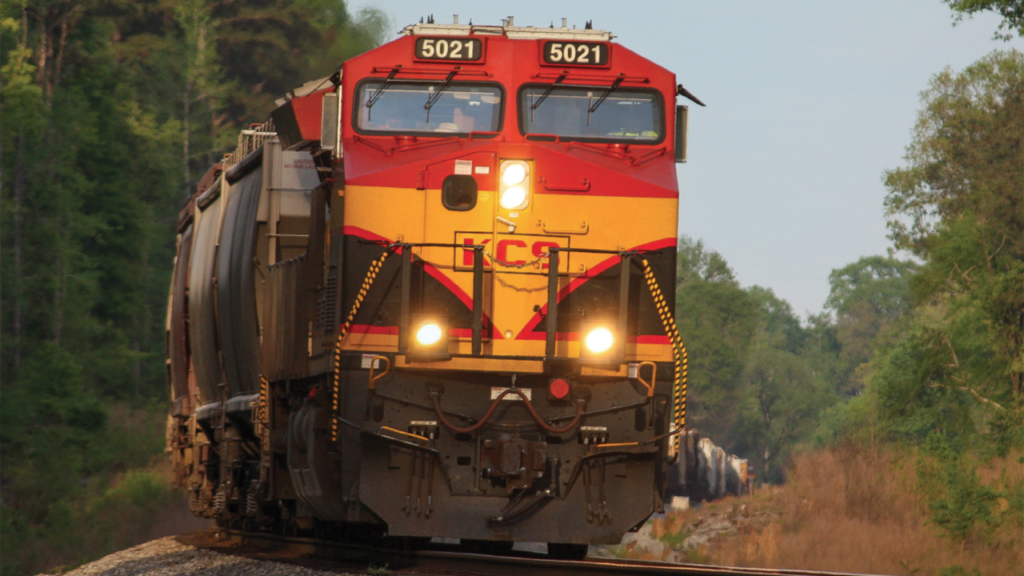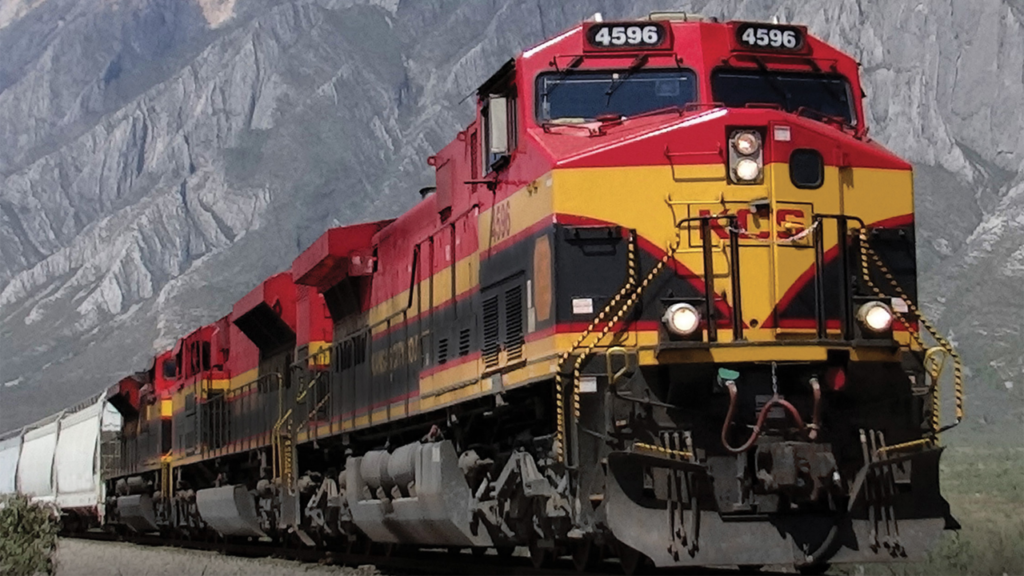
CEO PERSPECTIVE: Competing on a Global Scale
Written by Pat Ottensmeyer, President and CEO, Kansas City Southern
Pat Ottensmeyer, President and CEO, Kansas City Southern
As part of a special series in Railway Age’s March 2022 issue, 11 North American railroad CEOs address what must be done to grow and gain market share from competing freight transportation modes. Here, Pat Ottensmeyer, President and CEO of Kansas City Southern, is the 5th to share his perspective.
Railroads have an exceptional opportunity to grow market share, and they can play a prominent role in promoting cross-border trade and investment in North America. To capitalize on these opportunities, rails must continue to improve service quality and consistency, grow capacity, and leverage the industry’s role as the most environmentally friendly mode of surface transportation. Importantly, rails must also actively incorporate safety into all aspects of the transportation ecosystem, which will help them attract and retain top talent with diversity of perspective and experience, sustain growth, and leverage the technology required to compete on a global scale. Kansas City Southern (KCS) is firmly committed to these principles, and we are driving growth through improvements in our service product. Service begets growth.
KCS operates the only single-line network between the U.S. and Mexico. Given our unique cross-border rail footprint, we understand the important role that rail plays in facilitating growth in cross-border trade. KCS’s role in North American trade is even more critical, given our proposed merger with Canadian Pacific (CP). If approved, this merger would create the first single-line U.S.-Mexico-Canada rail network. We expect this combination to enhance competition with all modes of freight transportation, providing new routes for shippers while reducing overall greenhouse gas emissions.

Technology will play a critical role as we look for opportunities to improve rail service, modal conversion and cross-border trade. Shippers, rails, and all other supply chain participants require real-time data to drive decision support. Rails must work closely with their supply chain partners to improve visibility to freight at every point in the shipment. KCS is investing in this area.
Our regulators and the government can also play an important role in driving truck-to-rail conversion and promoting North American trade. Improvements to customs clearance processes and investments in critical port infrastructure help facilitate faster and more reliable rail service. Trilateral cooperation between the U.S., Mexico and Canada is also critical for efficient cross-border trade and creating an environment that is attractive for reshoring and new investment.

For its part, KCS is preparing for current and future growth by investing in new capacity and engaging people at all levels of the organization to improve customer service. We are making targeted capital investments, particularly on our cross-border network. KCS is investing in new sidings on the Rosenberg and Laredo subdivisions in Texas to add capacity and increase velocity. We are making investments in our international bridge to improve throughput and the velocity of cross-border rail shipments, and we are investing in northern Mexico to improve capacity, yard efficiency, and network performance.
The KCS team is also diligently working to improve service and promoting growth through strategic operational initiatives designed to optimize network performance and trip plan compliance. We recently refined elements of our service design plan to better align capacity and assets with our customers’ operations and requirements. We have undertaken focused efforts to improve critical yard operations in Mexico, and we have performed cross-functional “deep dives” into our grain and intermodal networks to improve on-time performance and customer satisfaction.
To further promote supply chain resiliency and cross-border trade, KCS is working with shippers and supply chain partners to develop a cross-border intermodal service. The Port of Lázaro Cárdenas has potential to be an important relief valve to the congested ports of L.A. and Long Beach, providing our customers with a compelling alternative to access southeastern, midwestern and Canadian markets.

Thanks to the hard work of our KCS team members, recent investments and initiatives have resulted in all-time best network velocity and dwell performance. However, we still have more work to do and additional opportunity for improvement. To better compete with other modes of freight transportation, particularly truck, our service needs to be faster and more reliable, and we need to offer more route options for our customers.
The proposed CP-KCS merger does just that, while delivering significant environmental benefits. Our combination drives reduced overall greenhouse gas emissions through improved operational efficiency and increased truck-to-rail conversions. We can provide faster, more reliable service to our customers, creating a compelling alternative to competing modes of transportation while improving the resiliency of the overall supply chain. Above all, we are embarking on these initiatives with a focus on the safety of our employees, customers and the communities we serve.
Read more of Railway Age’s special CEO Perspectives series:
• Katie Farmer, BNSF: Sustain a Growth Mindset
• Keith Creel, Canadian Pacific: Supply Chain, Market Reach and Sustainability
• JJ Ruest, CN: Railroads Must Lean Into Their Natural Strengths
• Jim Foote, CSX: Performance, Sustainability, Innovation Are Keys to Growing Market Share
• Alan Shaw, Norfolk Southern: A Simple, Powerful Recipe for Growth
• Lance Fritz, Union Pacific: Solving Customer Problems at the Heart of Innovation
• Peter Gilbertson, Anacostia Rail Holdings: Growing With People
• Dan Smith, Watco: Stay Close to Your Customer
• Ian Jefferies, Association of American Railroads: A Growing Rail Industry Needs Policy Sanity
• Chuck Baker, American Short Line and Regional Railroad Association: Four Parallel Paths to Growth



